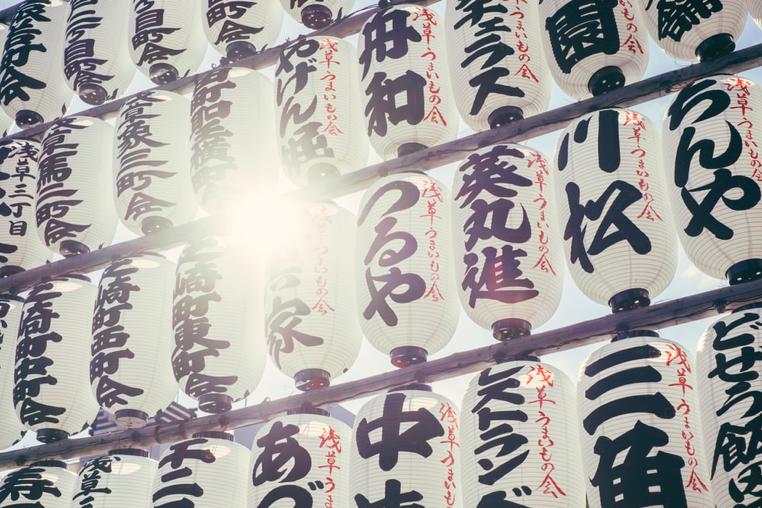ResearchJuly 24, 2019
All about Shukatsu- The WHAT, HOW, WHY and… SHOULD I?
Summary
A term coined from putting the words “shushoku 就職 (finding employment)” and “katsudo 活動 (activities)” together, ‘shukatsu’ is the act of job hunting for fresh college graduates in Japan (UNIV IN JAPAN, 2018). Simultaneous recruitment of new graduates is a norm in Japan, with current recruitment period for large companies (April) set by Keidanren 経団連 (Japan Business Federation). This entire procedure spans roughly a year, following a fixed timeline of events (based on 2017 guidelines and applies through spring 2020).
As an international student studying in Japan, I witnessed first-hand the daunting experiences of my non-Japanese peers going through the rigorous procedure of job hunting here. Unfortunately –or fortunately- for me, I have decided not to stay on after graduation. That aside, for those of you considering working in Japan, here are some facts about shukatsu and handy advice I received from my peers.

The Flow of Job-Hunting in Japan
Preparatory period [Year 3 of university, February to March]
- Around this time most students start attending company information seminars, alumni visits and researching on the net for companies they’re interested in.
Starting point [Year 3 of university, March onwards]
- From March, students start to write up ‘entries’ to send to companies, expressing their interest in the firm. This is different from an application- an entry is simply a means for students to make known their interest in the company.
- Universities will provide students information related to job openings, conduct career seminars and have career centres provide individual career counselling and job hunting guidance.
- Career support websites like Rikunabi, MyNavi, Diamond Shukatsu Navi etc will also offer services whereby students can access shukatsu articles, guides, browse through companies and even submit their entries to companies. Very few have sites in English.
Halfway point [Year 4 of university, March onwards]
- Around March in the final year of college, companies require students to submit resumes 履歴書and/or entry sheets エントリーシート.
- What differentiates resumes from entry sheets are the 自己PR section in the latter- this is where companies judge how well the student fits with what they’re looking for [Tomoya, 2019]. Accomplishments during student years, strengths/weaknesses, what students can offer the company- this PR section should be tailored specifically to the company’s requirements.
- After submissions document screening begins; if passed, students move on to taking written exams and (mainly group) interviews.
End point [Year 4 of university, July onwards]
- July- August is otherwise known as the peak of the examination and interview season. Interviews can be held in a group or individual format- although larger companies usually hold the former. On average, companies have 3 to 4 rounds of interview sessions, although in some extreme cases the number can hit 10.
- Examinations- also known as an SPI test, are held around this time period. This is a standardised test in literary and numerical logical thinking, usually held in Japanese. There are plenty of books with practice questions available for purchase, and you can practice online too.
- October is when unofficial/early official job offers 内定 are handed out to students by companies (The Japan Times, 2018). Such offers are usually extended over the phone, emails and sometimes even during the final selection.
Following this timeline allows companies to uniformly hire students with the least interference to their academic performance as much as possible. For some of you who are wondering if this all sounds crazy, fret not, you’re not alone. Below are some common concerns/difficulties many of us non-Japanese face when it comes to job-hunting; read on and you might just feel a tad less helpless or alone.

Common Shukatsu Challenges for International Students
#1- Everything is in Japanese!
Working here means that companies do not treat you any different just because you’re a non-native speaker/non-Japanese applying for a job. Unfortunately, all the interviews and exams conducted during shukatsu are held in Japanese alone… which means just having a JLPT N! Certificate does not mean much if you’re not confident in your speaking abilities.
#2- Gotta dress and look the same as everybody else
Uniformity is seen as a big deal here in Japan, and unfortunately for most non-Japanese that means yes, donning on the “Job Hunting Suit” is compulsory. Everyone’s pretty much wearing the same black suits, black heels (for ladies), black work bags… Not to mention the identical black ponytails.
#3- Specialisation doesn’t quite exist
In a country where the name of the university is what counts, and most graduates apply to big companies for their reputations, many a times you get assigned a job that had completely nothing to do with your college major. To be honest, a liberal arts graduate assigned an engineering job is not all that uncommon here.
#4- Pay is hardly ever performance-based
As most people might know, Japan’s notorious seniority wage system still exists even at this day and age. Most big, traditional companies still do not follow a performance-based pay structure. Good news though: newer, smaller companies might subscribe to that. Unfortunately, these smaller companies probably can’t afford to pay you an amount anywhere close to what big corporations can afford to.
#5- Those tests and interviews just can’t get any more unreasonable
It’s common knowledge that many Japanese students struggle with the mandatory tests and interviews companies conduct, what more us international students who don’t have Japanese as our native language?! Such tests usually have really strict time limits and those conducted in English are rare as a unicorn, so if ‘unreasonable’ doesn’t describe it I don’t know what could.
#6- Where and how do I even begin?
It’s hard for us international students to know what to do, where to go, or how to even start being a part of this complex process. There are so many companies out there- with smaller, newer firms seemingly more open to hire international students, and yet information is scarce. Larger companies are usually the ones to come for career-related events held by universities, so getting wind of smaller alternatives require your own initiative and research. Websites don’t give detailed information either, not to mention everything is mostly in Japanese.
#7- What now? Does this mean I don’t have a shot at working in Japan?
Well, that’s certainly not the case! Lucky for you, if you’re still here and reading on, here are some useful advices; courtesy of my peers.

Tried & Tested tips for Conquering Shukatsu
1) Narrow down your focus.
Research on companies you’re interested in, and go for their talks (説明会). Although these sessions are time-consuming, they are useful in providing the information you need to kick-start your job-hunting journey.
2) Prepare yourselves for common interview questions.
“What you want to do in the future/ what you want to achieve in 5 years or in your career/ how you can contribute to the company” Like job-hunting anywhere else in the world, companies want to hire individuals whose goals are clearly aligned with their own visions.
3) Seek the help of your Japanese peers.
Get them to help out with proofreading of your resumes/entry sheets. It will prevent you from getting cut out from the selection pool during document screening- which is only the beginning of this ordeal!
4) Don’t give in to peer pressure!
Last and most importantly, don’t feel pressured to apply to 40-50 companies just because most of your Japanese peers do so. Instead of adding unnecessary stress and frustration (given language as an existent, daunting barrier), prioritise jobs YOU are interested in and target your applications wisely.
… And that pretty much sums up everything about shukatsu and how you can minimize the pain of this tedious process. I certainly hope that you found this article useful. Lastly, to all of you planning to do job-hunting in Japan- I wish you the best of luck!
By VICTORIA PODIONO
References
The Japan Times. (15 September, 2018). End guidelines for hiring new grads? Retrieved from The Japan Times Opinion: https://www.japantimes.co.jp/opinion/2018/09/15/editorials/end-guidelines-hiring-new-grads/#.XS7UhugzY2w
Tomoya, Y. (7 March, 2019). 【エントリーシートと履歴書の違い】作成する際のポイントと注意点. Retrieved from Shukatsu no Mirai: https://shukatsu-mirai.com/archives/20911#i-1
UNIV IN JAPAN. (15 September, 2018). Shūkatsu: Job-Hunting in Japan. Retrieved from UNIV IN JAPAN: https://univinjapan.com/shukatsu.html
Yoshiko, U. (30 May, 2016). “Shūkatsu”: How Japanese Students Hunt for Jobs. Retrieved from nippon.com: https://www.nippon.com/en/column/g00365/shukatsu-how-japanese-students-hunt-for-jobs.html














